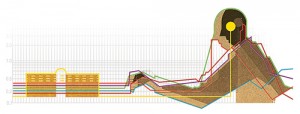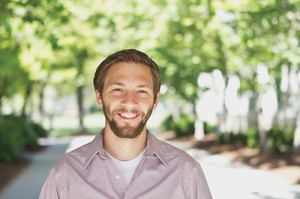A professor takes statistics into apologetics.
Stats professor G. Bruce Schaalje’s (BS ’77, MS ’79) research is furthering cancer-tumor classification—and, at the same time, defending the Book of Mormon. The biostatistician didn’t start out in Book of Mormon apologetics, but when a Stanford-produced article used a statistical-classification method to conclude that Sidney Rigdon wrote the Book of Mormon, Schaalje was irked.
“I didn’t think the conclusion they reached was justified at all,” says Schaalje. So he responded with a paper of his own, published in the same journal, that dovetailed nicely with his biostats research. It turns out that classifying tumors is “a pretty similar problem to authorship attribution—words and base pairs and DNA are similar kinds of things,” explains Schaalje. “[The Stanford researchers] used a statistical method originally used to differentiate types of cancers based on genetic markers.”
 The problem with the Stanford article, says Schaalje, is that it applied a closed-set classification method—the researchers compared writing samples from four 19th-century authors with Book of Mormon patterns, without allowing for the possibility of an unknown author. Schaalje’s study applied their method to the Federalist Papers, using only the Stanford list of potential Book of Mormon authors, and found that these papers could also be attributed to Sidney Rigdon—who was born a decade after the papers were published.
The problem with the Stanford article, says Schaalje, is that it applied a closed-set classification method—the researchers compared writing samples from four 19th-century authors with Book of Mormon patterns, without allowing for the possibility of an unknown author. Schaalje’s study applied their method to the Federalist Papers, using only the Stanford list of potential Book of Mormon authors, and found that these papers could also be attributed to Sidney Rigdon—who was born a decade after the papers were published.
“The question shouldn’t be ‘Which of these on the list is the author?’” explains Schaalje. “It should be ‘Is there enough evidence that it could be one of them?’” When Schaalje adjusted the Stanford researchers’ method to allow for an open set, the results indicate that multiple unknown authors are more likely to have written the Book of Mormon than the 19th-century authors.
Based on his Book of Mormon research, Schaalje wrote another paper detailing an open-set classification theory that carries implications for cancer research: “When you are classifying tumors, the best method is to have an open set—to say, ‘Maybe it’s a new type of cancer.’”
Schaalje is also exploring new ways to understand the Book of Mormon. “We have been letting everyone else take the initiative and just rebutting what they say,” he explains. Now he’s creating models to map Book of Mormon word patterns. “The Book of Mormon is a complicated book,” says Schaalje. “I want to see if you can reflect that complexity [in a statistical model].”
Shaalje’s Sidekick
New converts and returned missionaries at BYU are usually first to spot “Joseph Smith” on campus. “People recognize me all the time,” says R. Dustin Harding (’13), who has portrayed the Prophet in five films, including The Restoration, a 20-minute video shown to investigators around the world.
In addition to portraying the Prophet since age 15, Harding served in the New Hampshire Manchester Mission, which includes Sharon, Vt.—the town where Joseph Smith was born. Now a stats major at BYU, Harding works with stats professor G. Bruce Schaalje (BS’77, MS ’79) in defending one of the Prophet’s greatest works, the translation of the Book of Mormon. “It has forced me to really dive into the Book of Mormon . . . and appreciate all the work that went into creating it,” says Harding.
Recognizing that “the spiritual foundation is key” to a testimony of the Book of Mormon, Harding says that applying scientific methods to the Book of Mormon helps its critics see that Church members have the confidence to explore its origins: “We do seek knowledge out, and we aren’t afraid to do it.”







